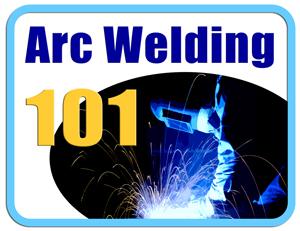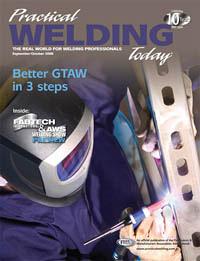Contributing Writer
- FMA
- The Fabricator
- FABTECH
- Canadian Metalworking
Categories
- Additive Manufacturing
- Aluminum Welding
- Arc Welding
- Assembly and Joining
- Automation and Robotics
- Bending and Forming
- Consumables
- Cutting and Weld Prep
- Electric Vehicles
- En Español
- Finishing
- Hydroforming
- Laser Cutting
- Laser Welding
- Machining
- Manufacturing Software
- Materials Handling
- Metals/Materials
- Oxyfuel Cutting
- Plasma Cutting
- Power Tools
- Punching and Other Holemaking
- Roll Forming
- Safety
- Sawing
- Shearing
- Shop Management
- Testing and Measuring
- Tube and Pipe Fabrication
- Tube and Pipe Production
- Waterjet Cutting
Industry Directory
Webcasts
Podcasts
FAB 40
Advertise
Subscribe
Account Login
Search
Welding aluminized steel: Best practices
- By Marty Rice
- Updated February 8, 2024
- November 3, 2014
- Article
- Arc Welding
Q: Which process, filler rod, and shielding gas work best for welding aluminized steel?
A: Aluminized steel resists fire, heat, corrosion, and oxidation. It’s used in many applications, such as weather shielding and exhaust systems. Steel is hot-dipped in an aluminum solution, which provides aluminum qualities on the surface of the cheaper and stronger steel base metal.
Like you do with galvanized steel, which is coated with zinc, you must burn through the aluminum and into the steel. The aluminum coating will melt away, allowing you to fuse into the steel beneath. Don’t let the melting aluminum interfere with the weld pool; this will cause porosity.
You can weld aluminized tubing with gas metal arc welding (GMAW) using ER70-S6 mild steel filler metal and 75 percent argon/25 percent oxygen shielding gas, but this will leave the finished weld zone unprotected because the aluminum will be burned away.
For a corrosion-resistant, completed weld, use one of the 400 series stainless steel wires, such as A1490.
Most of the popular welding processes can be used, but I prefer GMAW because it works well on custom exhaust systems for my high school students’ hot rods.
Make sure you have proper ventilation so you won’t breathe the fumes, and use the correct paint on the finished weld where the aluminum coating has been burned off if you’re using mild steel wire.
About the Author

Marty Rice
High School Career Center in Texas
Questions for the author can be e-mailed to vickib@thefabricator.com
About the Publication
subscribe now

The Welder, formerly known as Practical Welding Today, is a showcase of the real people who make the products we use and work with every day. This magazine has served the welding community in North America well for more than 20 years.
start your free subscription- Stay connected from anywhere

Easily access valuable industry resources now with full access to the digital edition of The Fabricator.

Easily access valuable industry resources now with full access to the digital edition of The Welder.

Easily access valuable industry resources now with full access to the digital edition of The Tube and Pipe Journal.
- Podcasting
- Podcast:
- The Fabricator Podcast
- Published:
- 04/16/2024
- Running Time:
- 63:29
In this episode of The Fabricator Podcast, Caleb Chamberlain, co-founder and CEO of OSH Cut, discusses his company’s...
- Trending Articles
Sheffield Forgemasters makes global leap in welding technology

ESAB unveils Texas facility renovation

Engine-driven welding machines include integrated air compressors

How welders can stay safe during grinding

The impact of sine and square waves in aluminum AC welding, Part I

- Industry Events
16th Annual Safety Conference
- April 30 - May 1, 2024
- Elgin,
Pipe and Tube Conference
- May 21 - 22, 2024
- Omaha, NE
World-Class Roll Forming Workshop
- June 5 - 6, 2024
- Louisville, KY
Advanced Laser Application Workshop
- June 25 - 27, 2024
- Novi, MI



























